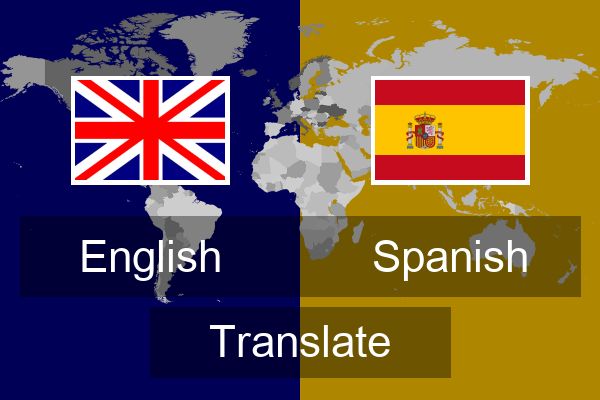
The ability to translate from Spanish to English effectively requires a deep understanding of both languages, cultural nuances, context, and grammar. This article will cover the essential elements of Spanish to English translation, common pitfalls, key vocabulary, and tips for improving translation accuracy.
1. Understanding the Basics of Spanish and English Grammar
Spanish and English have many similarities, both deriving a significant portion of their vocabulary from Latin roots. However, there are notable grammatical differences, such as gendered nouns in Spanish, verb conjugations, and sentence structure variations.
Gendered Nouns and Articles
Spanish nouns are gendered, meaning they are either masculine or feminine, which also affects the articles that precede them (e.g., el for masculine and la for feminine). English, in contrast, does not have gendered nouns, making this aspect of translation unique.
Example:
- Spanish: La casa es bonita.
- English: The house is beautiful.
Verb Conjugation Complexity
Spanish has a variety of verb tenses and conjugations, more extensive than English. Translating accurately often requires an understanding of subtle differences in tense and mood.
Example:
- Spanish: Yo he estado esperando por horas.
- English: I have been waiting for hours.
2. Common Challenges in Spanish to English Translation
False Cognates
False cognates, or “false friends,” are words that appear similar in both languages but have different meanings. This can lead to misinterpretations and awkward translations.
Examples:
- Embarazada (Spanish) does not mean embarrassed in English; it means pregnant.
- Éxito (Spanish) does not mean exit; it means success.
Idiomatic Expressions
Idioms are challenging because their literal translations often make little sense in the target language. Translators need to understand the cultural context and find equivalent expressions in English.
Examples:
- Spanish: Tirar la toalla.
- Literal Translation: Throw the towel.
- English Equivalent: Throw in the towel (meaning to give up).
Syntax and Sentence Structure
Spanish sentence structure is more flexible than English, often allowing for rearranged word orders that still make sense. Translators must adapt these structures to English norms to ensure readability.
Example:
- Spanish: Ayer, María compró un libro interesante.
- English: Yesterday, María bought an interesting book.
3. Commonly Used Vocabulary in Spanish to English Translation
Vocabulary knowledge is essential to ensure accurate translations. Here are some commonly used words and their English equivalents:
| Spanish | English |
|---|---|
| Amigo | Friend |
| Familia | Family |
| Amor | Love |
| Felicidad | Happiness |
| Trabajar | To work |
| Casa | House |
| Libro | Book |
| Escuela | School |
| Mañana | Tomorrow |
| Pequeño | Small |
4. The Importance of Context
Translation without considering context can lead to significant misunderstandings. Spanish, like English, has words with multiple meanings, so it’s crucial to identify the appropriate meaning based on context.
Example:
- Spanish Word: Banco
- Meanings: Can mean bank (financial institution) or bench (a seat).
- Contextual Sentence: Voy al banco para descansar un rato.
- Translation: I am going to the bench to rest for a while.
5. Types of Spanish to English Translation
Technical Translation
Involves translating specialized fields like medicine, engineering, and law. Technical translation requires not only language proficiency but also subject matter expertise to ensure accuracy.
Literary Translation
The translation of books, poetry, and other creative works requires attention to tone, rhythm, and cultural connotations. Translators often have to balance literal meaning with preserving the original’s style and emotion.
Document Translation
Includes personal documents, official records, contracts, etc. This type requires high accuracy and familiarity with legal and official terminology.
Website and Software Localization
Localization is the process of adapting digital content to suit cultural and linguistic contexts. This often involves translating words and adapting images, layouts, and functionalities for the target audience.
6. Tips for Effective Spanish to English Translation
1. Understand the Cultural Context
Spanish is spoken in over 20 countries, each with unique dialects and cultural nuances. Understanding regional differences in Spanish, such as idioms, slang, and colloquial phrases, will improve translation accuracy.
2. Focus on Clarity Over Literal Translation
Avoid translating word-for-word, especially for complex phrases or idiomatic expressions. Instead, aim for clarity and natural flow in English.
3. Use Language Tools Wisely
Online tools like Google Translate can be helpful for single words or short phrases. However, for complex sentences and contextual accuracy, it’s best to use human judgment or consult professional resources.
4. Practice Consistently
The best way to improve translation skills is through regular practice. Translate a variety of texts and seek feedback from native speakers or language professionals.
7. Commonly Misinterpreted Spanish Words and Phrases
De hecho
- Literal Translation: Of fact
- Correct Translation: In fact
Asistir
- Literal Translation: To assist
- Correct Translation: To attend (e.g., a meeting)
Realizar
- Literal Translation: To realize
- Correct Translation: To carry out or to perform
8. Resources for Spanish to English Translation
Several resources can aid in mastering Spanish to English translation, including online dictionaries, thesauruses, grammar resources, and bilingual books.
- WordReference: A trusted online dictionary with examples and forums for discussion.
- Linguee: Combines dictionary entries with real-world examples of how words are used in both languages.
- Duolingo: A language-learning platform offering interactive courses for both beginner and advanced learners.
- Memrise: Provides vocabulary flashcards, interactive courses, and audio resources.
9. The Role of Machine Translation in Spanish to English
Machine translation has advanced considerably with tools like Google Translate, DeepL, and Microsoft Translator offering quick, free translations. However, they have limitations, especially with context-heavy or creative texts.
To avoid mistranslations, machine translations should be used as a reference or for simple translations. For professional documents or nuanced content, a human translator ensures better quality and reliability.
10. Career Paths in Spanish to English Translation
With the growing need for bilingual communication, Spanish to English translators have diverse career opportunities:
- Freelance Translator: Many companies and individuals seek freelance translators for tasks like translating business documents, legal papers, and websites.
- Interpreter: Interpreters work in real-time settings, such as conferences, courtrooms, or hospitals, facilitating live communication.
- Localization Specialist: Works with software or media companies to adapt content for English-speaking markets.
- Translation Editor: Ensures the accuracy and quality of translations by reviewing and editing work completed by translators.
Conclusion
Translating from Spanish to English is a skill that requires linguistic knowledge, cultural understanding, and practice. By focusing on grammar, vocabulary, context, and the specific type of translation needed, translators can bridge the gap between these two widely spoken languages. Whether as a hobby, for business, or as a career, Spanish to English translation opens doors to diverse opportunities and rich, bilingual communication.






Leave a Reply